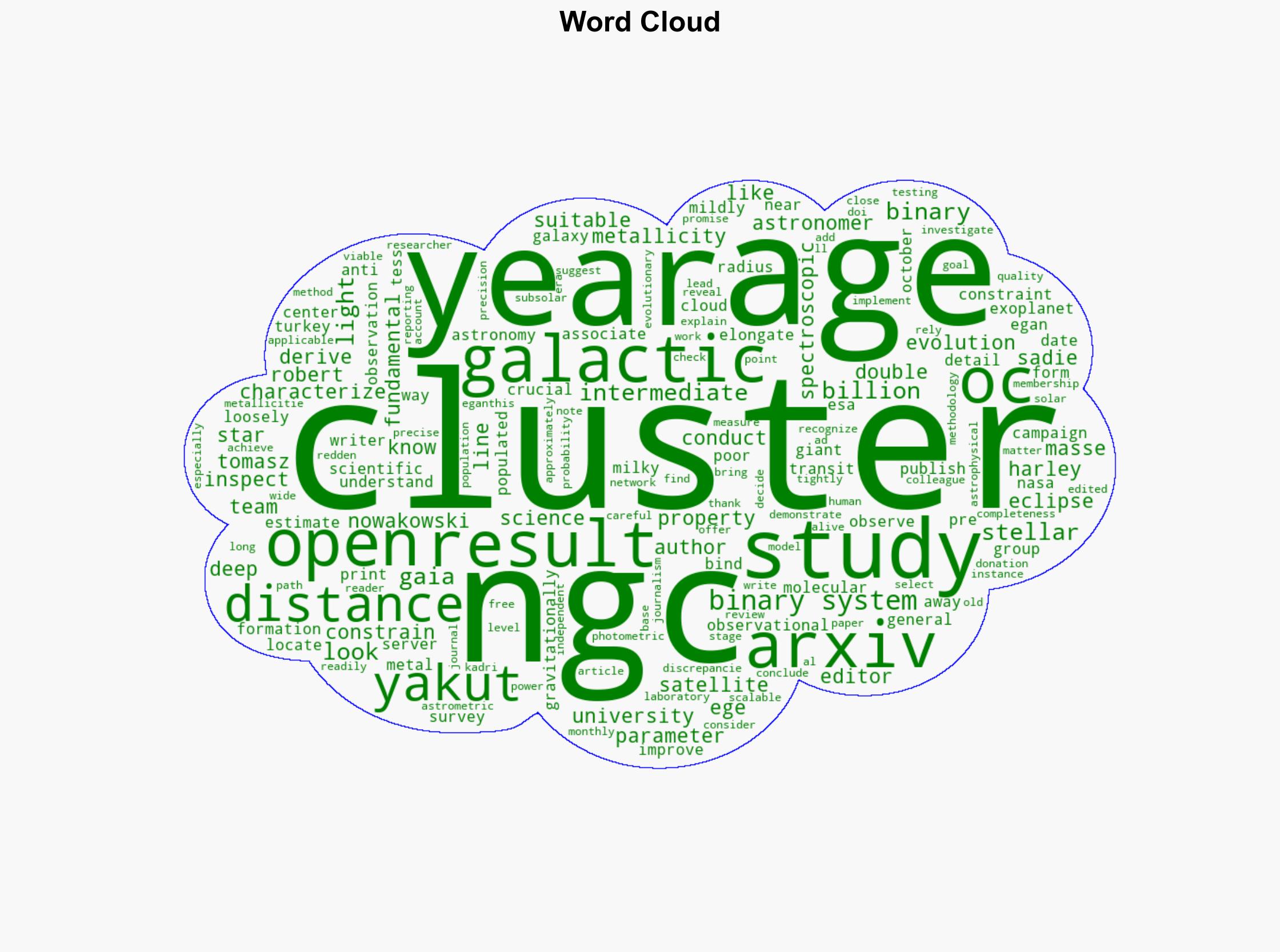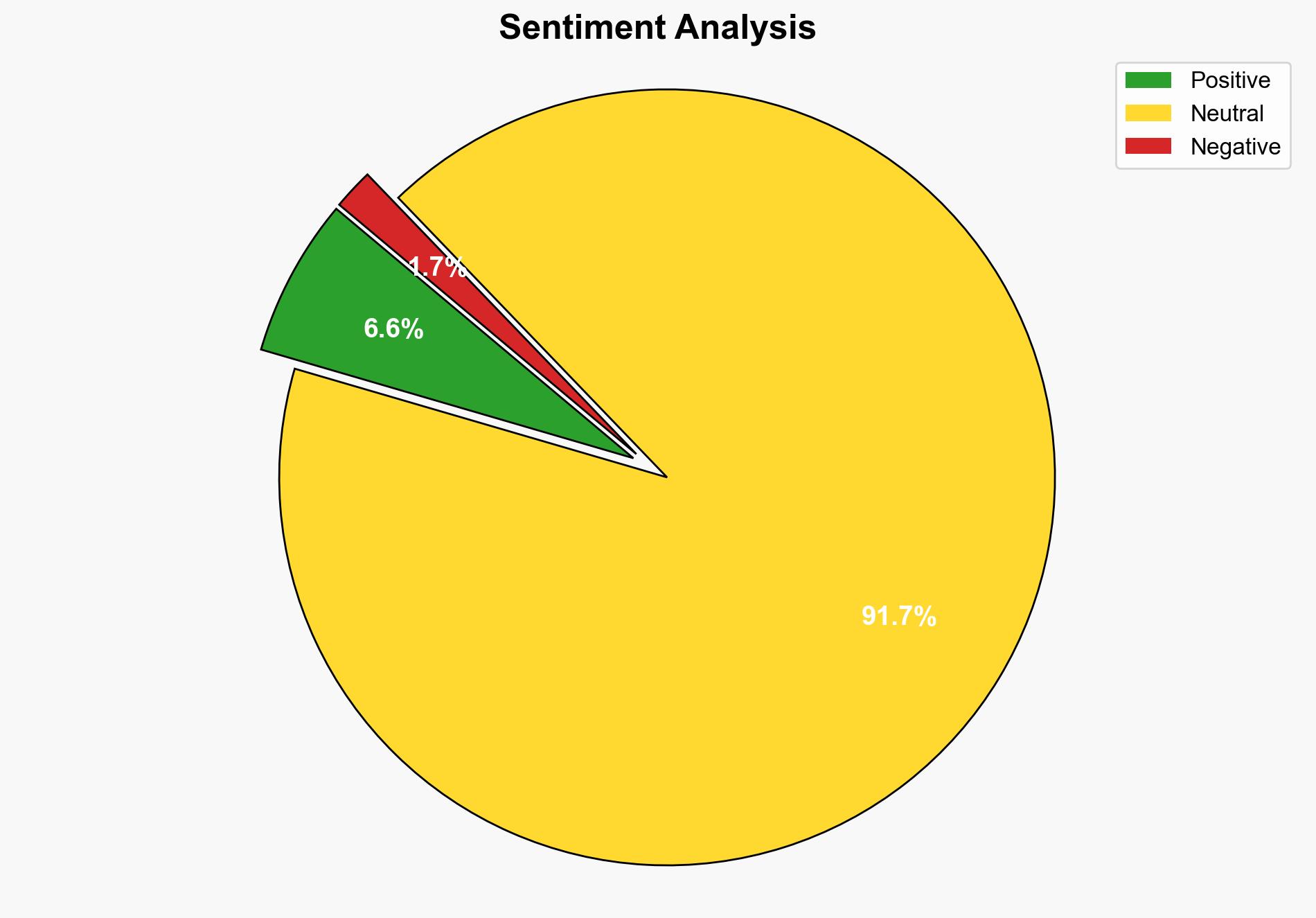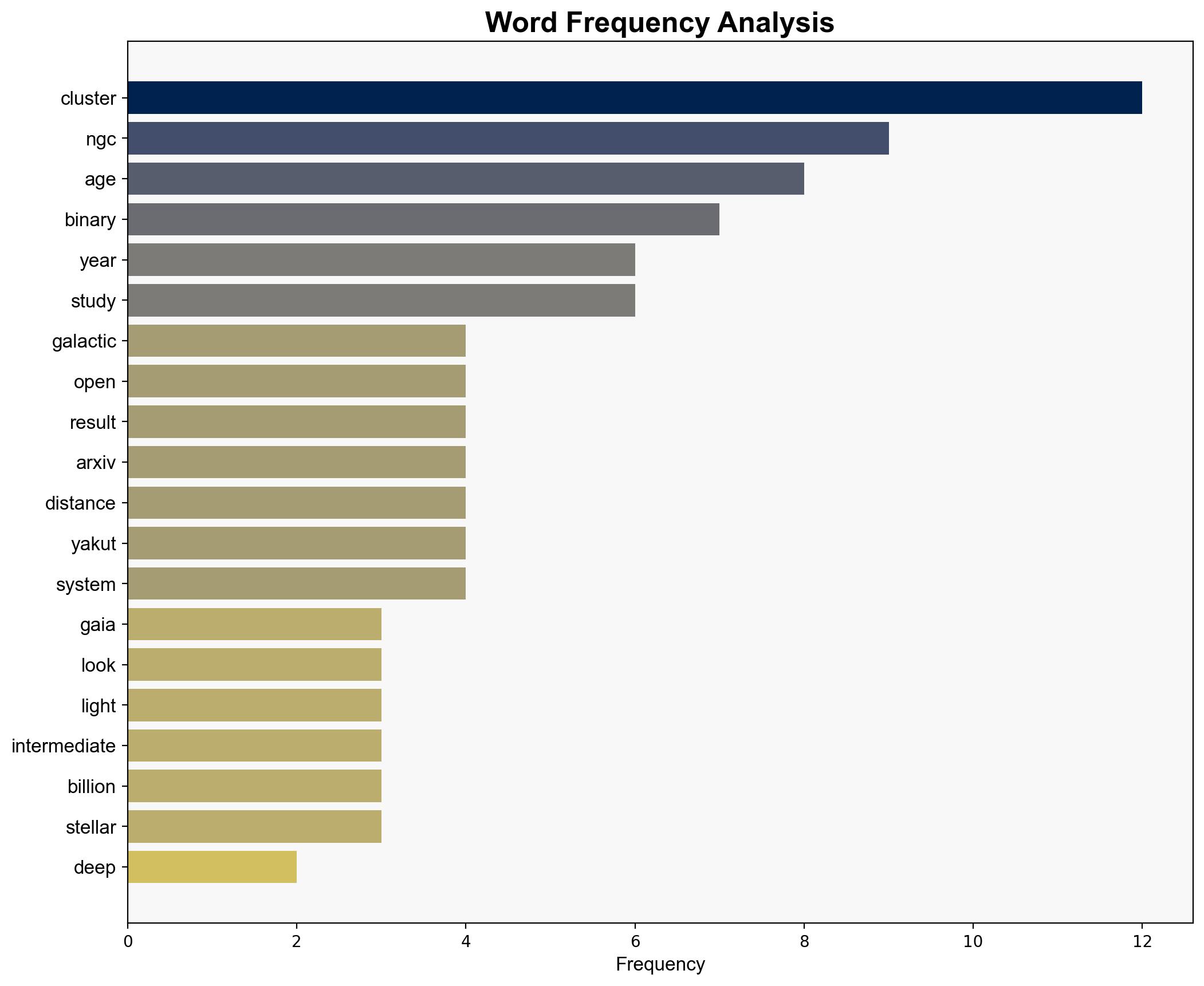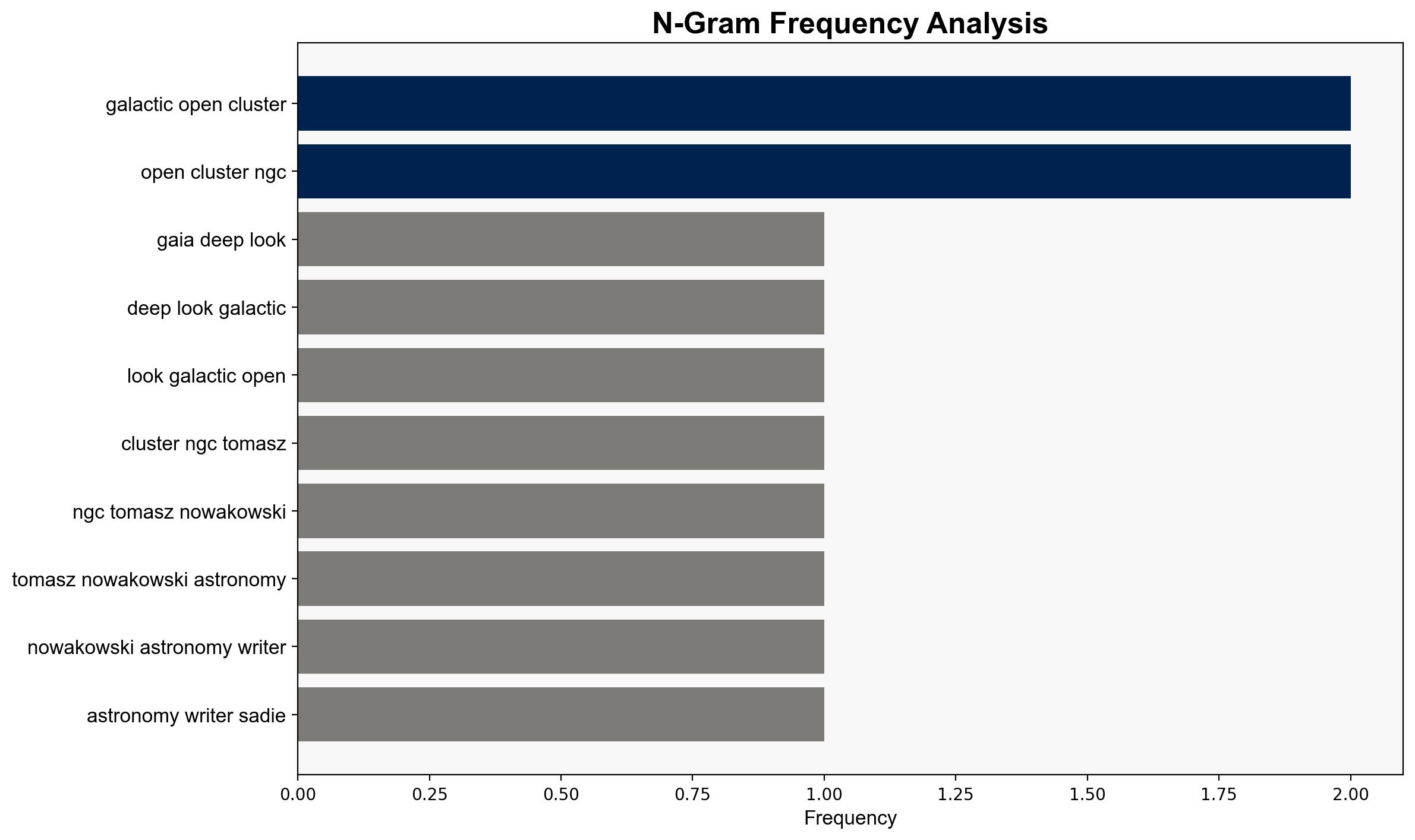Gaia provides a deep look into the galactic open cluster NGC 2506 – Phys.Org
Published on: 2025-10-15
Intelligence Report: Gaia provides a deep look into the galactic open cluster NGC 2506 – Phys.Org
1. BLUF (Bottom Line Up Front)
The analysis of NGC 2506 using Gaia and TESS data reveals significant insights into the cluster’s age, metallicity, and distance, with a high confidence level in the findings due to the robust methodology applied. The most supported hypothesis suggests that the cluster is approximately 2 billion years old, with a metallicity level indicative of an intermediate-age open cluster. Recommended action includes further application of this methodology to other clusters to refine models of stellar evolution.
2. Competing Hypotheses
1. **Hypothesis A**: NGC 2506 is an intermediate-age open cluster with a metallicity level that supports current models of stellar evolution. This hypothesis is supported by the recent study’s findings of a 2 billion-year age and specific metallicity levels.
2. **Hypothesis B**: NGC 2506’s characteristics differ significantly from current models, suggesting an alternative evolutionary path or errors in data interpretation. This hypothesis arises from discrepancies in previous studies regarding age and metallicity.
Using ACH 2.0, Hypothesis A is better supported due to the consistency of the new data with established models and the methodological rigor of the study.
3. Key Assumptions and Red Flags
– **Assumptions**: The accuracy of Gaia and TESS data is assumed to be high, and the methodologies used are assumed to be applicable to other clusters.
– **Red Flags**: Discrepancies in age and metallicity from previous studies suggest potential data interpretation issues or methodological limitations.
– **Blind Spots**: Potential biases in data selection and analysis could affect results, particularly if certain binary systems were excluded.
4. Implications and Strategic Risks
Understanding NGC 2506’s properties enhances models of stellar evolution, impacting broader astrophysical theories. Risks include reliance on potentially flawed data or methodologies, which could misinform future research. There are no immediate geopolitical or economic threats identified from this study.
5. Recommendations and Outlook
- Continue applying the study’s methodology to other clusters to validate findings and refine stellar evolution models.
- Best-case scenario: Enhanced understanding of stellar evolution leading to breakthroughs in astrophysics.
- Worst-case scenario: Methodological flaws lead to widespread misconceptions in the field.
- Most likely scenario: Incremental advancements in understanding open clusters and their role in the galaxy.
6. Key Individuals and Entities
– Tomasz Nowakowski
– Sadie Harley
– Robert Egan
– Kadri Yakut
7. Thematic Tags
stellar evolution, astrophysics, galactic clusters, Gaia satellite, TESS, scientific methodology





